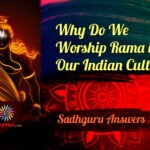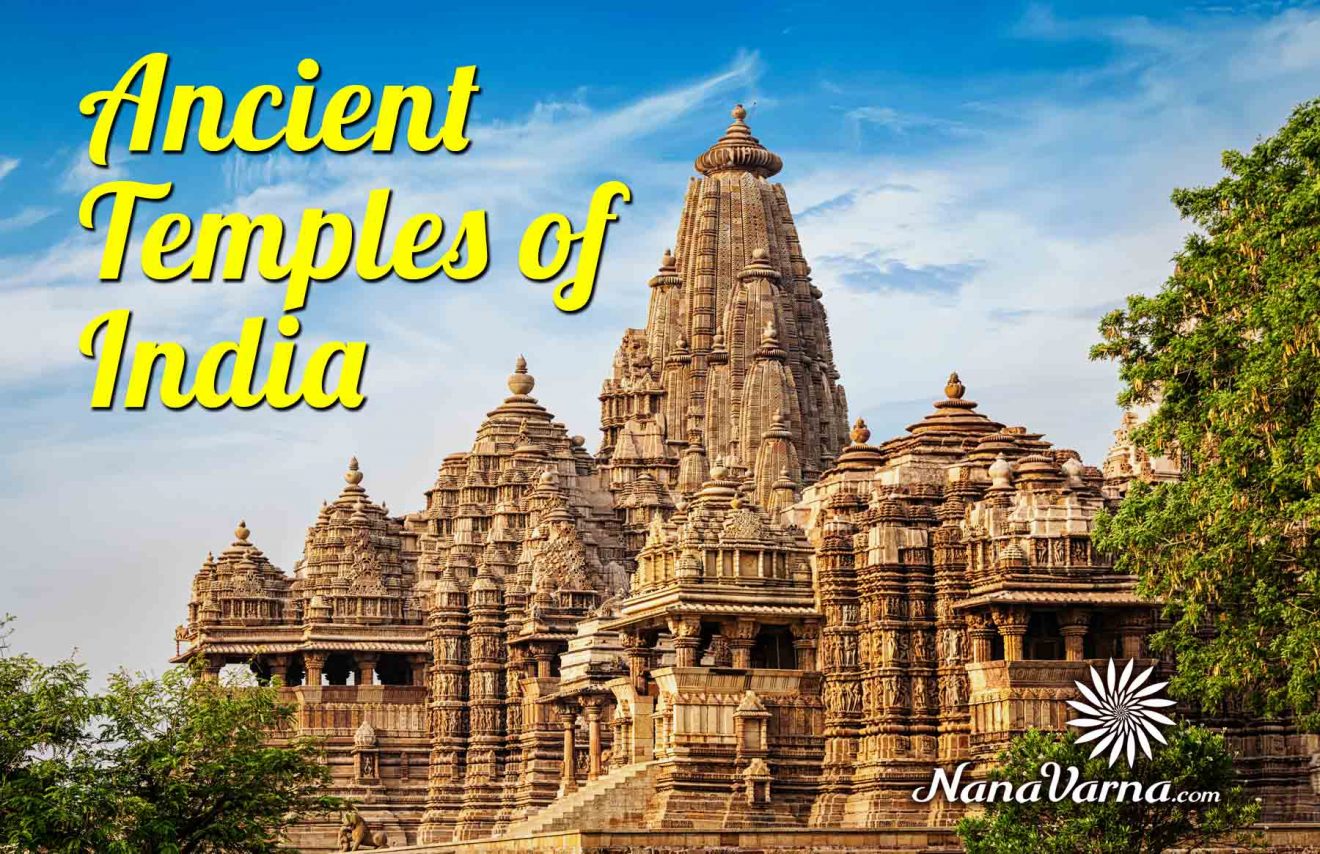Like a golden necklace studded with priceless jewels of many colours, so is India decorated with hundreds of ancient temples creating a divine halo around Bharat Mata.
With the recital of sacred Sanskrit hymns, burning of incenses and lamps, Pushpanjali or offering of floral tributes to deities and blowing of Sankh or conch shells in temples, India really is a microcosm of heaven.
Since ages, there are many temples that have attributed to the sacredness and cultural beauty of India. However, there are 15 Ancient Temples in India that deserve a special mention due to their antiquity, religious importance and architectural style that are given below:
1. Jagatpita Brahma Mandir – Abode of the World’s Creator
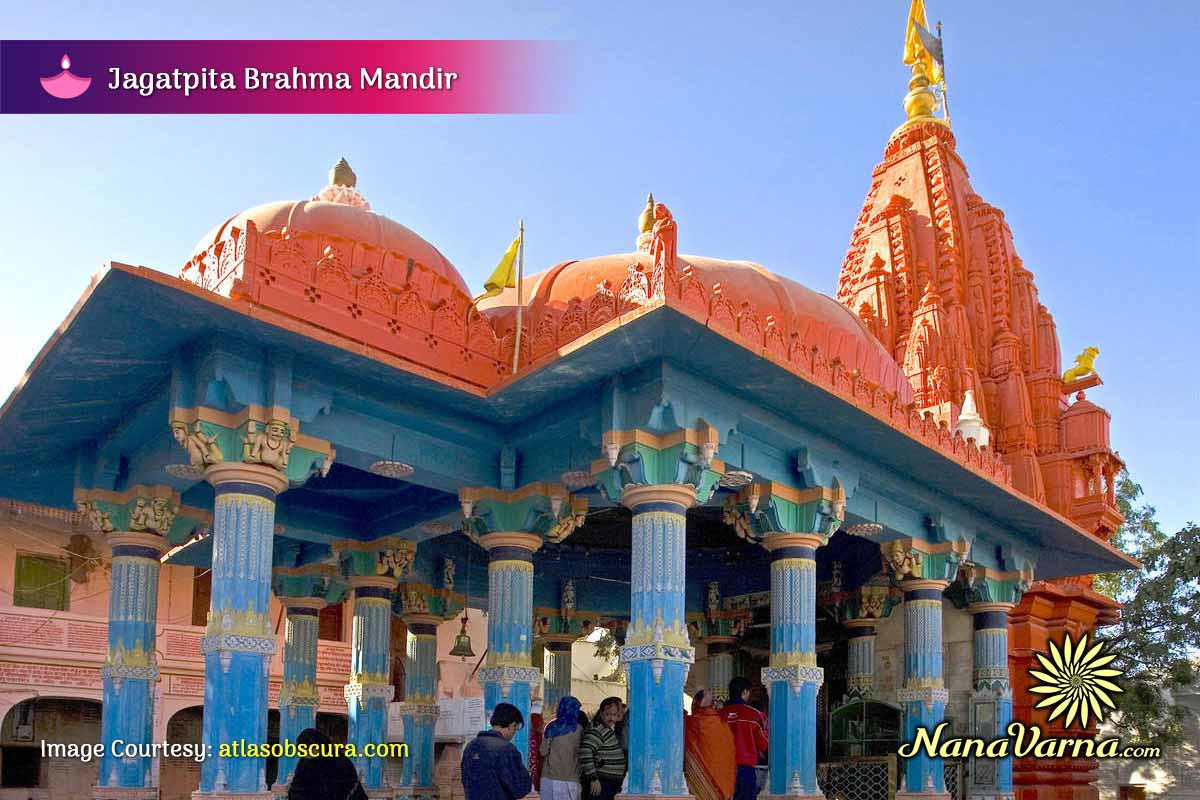
The Hindu mythology says Brahma created the world. One of the most Ancient Temples in India located at Pushkar in Rajasthan is believed to be 2000 years old bearing the present structure that came up in the 14th century.
Legends believe that Lord Brahma himself selected this site for the temple where the idol of four-headed Brahma and his consort Gayatri lie at the sanctum sanctorum.
This is the only temple of Lord Brahma in the world built in marble and stone with motifs of Hamsa or Swan, legendarily associated with the birth of four hills around it which are: Ratnagiri in the South, Nilgiri in the North, Sanchoora in the west and Suryagiri in the east. Brahma created them in its four sides so that demons or Asuras do not attack him while performing a sacred Yajna.
In 718 A.D. Adi Shankaracharya renovated it thus testifying that it existed then.
The Padma Puran says Brahma slew the demon Vajranabha with a lotus and three lotus petals fell on earth during the defeat.
Brahma named this place as Pushkar which has two Sanskrit syllables: Pushpa means flower and Kar meaning palm or hand. Thus, these two words make up the word Pushkar.
Here, the Goddess of Milk, Gayatri, attained her divinity. Naturally, every Hindu woman should visit it. Such visits would be more useful from spiritual sense during the Kartik Purnima when a huge festival dedicated to Lord Brahma takes place.
Bathing at the sacred Pushkar Lake during Kartik Purnima is trusted to help people remove their earthly sins.
It is a must-visit temple to witness how 80 large and about 400 smaller Hindu temples destroyed by Islamic invation at Pushkar rose like Phoenixes from their ashes over the decades.
2. Mahabalipuram Temples – The Most Magnificent Example of the Great Sangam Culture
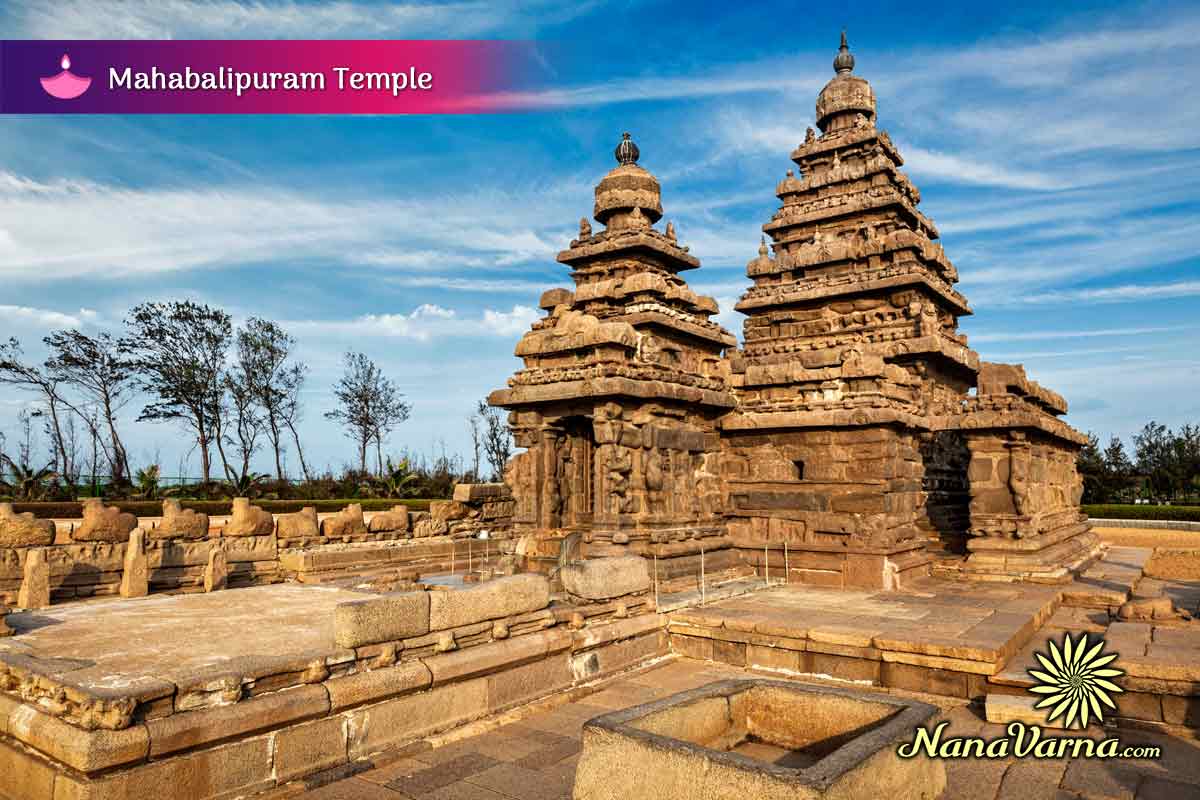
One of the Ancient Temples in India built totally of granite stone, the Mahabalipuram Temple of Tamil Nadu is about 2000 years old with the present structure, an architectural wonder, built around 7th century A.D.
This chariot-shaped temple undoubtedly is an epitome of architectural excellence. A large number of European travellers, including Marco Polo, had visited this temple about 1000 years ago, termed it the Shore Temple as it lay very close to the sea.
Built during the reign of King Narasimhavarman, it is dedicated to Lord Shiva, Durga, Vishnu and Krishna. The Mahabharata mentions it.
It is the only Seven Pagodas of India, mentioned by the European travellers. Exposure of an old granite temple, sculptures of lions, elephants and peacocks used in decorating it during the Tsunami of 2004 prove that the other pagodas might still be under the sea.
This temple acted as a landmark navigation facilitator for ancient rower of ships, perhaps the sole example of the temple-based navigational system in the world.
Located at the Coromandel Coast, it bears the world’s oldest and largest rock-cut reliefs of the scenes of mythology and Dharma: Descent of Ganga on Earth and Penance of Arjuna of Mahabharata. You just cannot imagine this stony wonder- the rock-cut relief! One needs to actually go there to enjoy the beauty of it…
Every year, Mahabalipuram Temple Complex holds the Dance Festival where Bharatnatyam, Kuchipudi, Kathak, Odissi, Mohini Attam and Kathakali are presented.
At this temple, you can find the legend of Prahlad and Hiranyakasipu. The appearance of Lord Vishnu from a pillar in the form of a man with a lion’s head to kill Hiranyakasipu is said to have taken place at this place. Mahabalipuram is believed to have been found by Bali, the grandson of Prahlad.
3. Mundeshwari Devi Temple – Earliest Specimen of Nagara Architecture
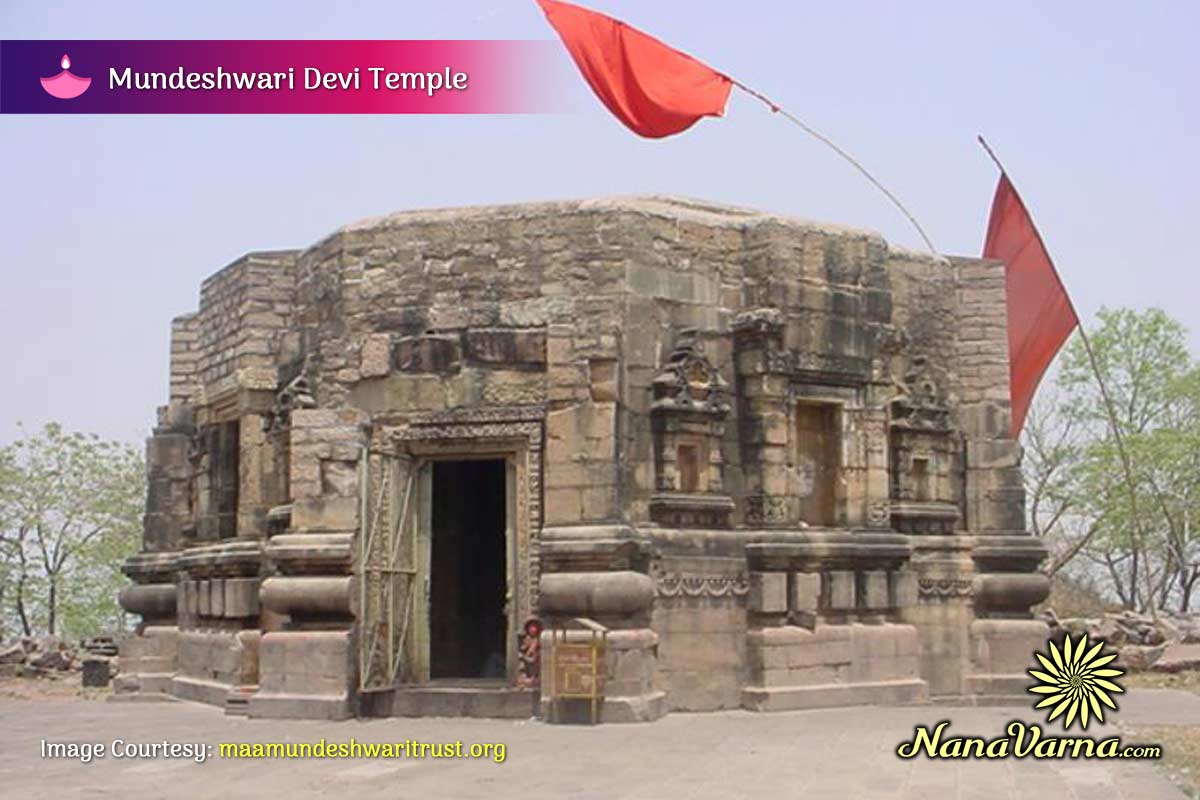
The only shrine of Goddess Durga that associates the destruction of Mashasura. Chanda and Munda, two brothers of Mahisashura, ruled this place. It was Munda who built this temple.
Located at Kaura in Kaimur district of Bihar, this wonderful octagonal temple of Lord Shiva and his consort Shakti is historically considered as the world’s oldest functional shrine as worship continued here without a break over the last 2000 years.
One of the Ancient Temples in India, it was built during the Saka rule. The Archaeological Survey of India (ASI) dates back its construction to 108 A.D.
Being the supreme example of Nagara architectural style, it is dedicated to the main presiding deity, Devi Mundeshwari (one of the representations of Goddess Durga) and Chaturmukh (four-faced) Shiva Linga, the only temple in India that has the idol of Naga or serpent king on the four-faced Shivlinga. It was constructed by the rulers of Naga Dynasty that used Naga or serpent as their Royal Emblem.
The most authentic description of this temple has been dated to 636 A.D. in the travel accounts of the Chinese traveller Huen Tsang who said that the temple was atop the hill and flashing lights of the shrine could be seen from far off places.
A Royal Seal of the Sinhala Emperor (Sri Lanka) Maharaja Dutthagamani belonging to 101-77 B.C. discovered by the ASI proves the temple was functioning around 2100 years ago.
For those who are keen on the epic Mahabharata, this temple is worth seeing as this place was offered as Gurudhakshina to Guru Dronacharya by the Kauravas and Pandavas.
4. Jagannath Temple – The Celestial Home of Lord Jagannath
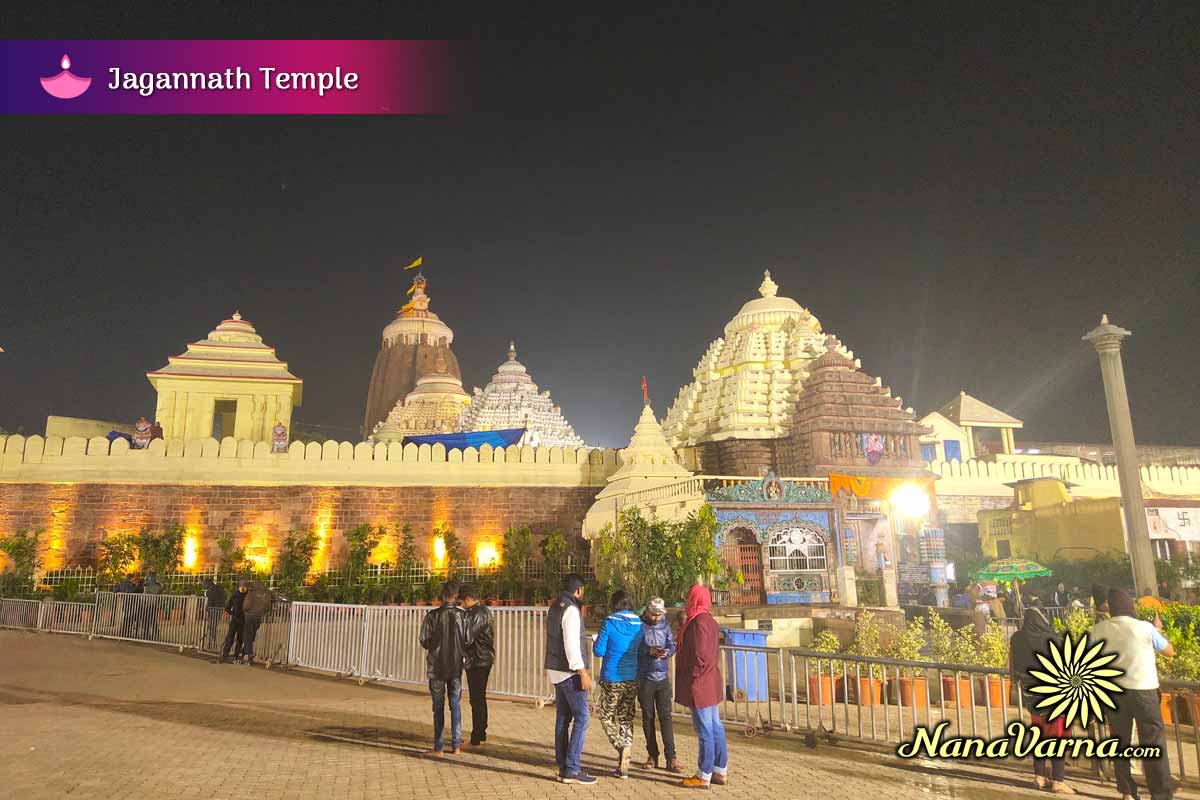
Located at Puri in Odisha, this 10th century A.D. temple, known for its architectural design, sculptures and divinity, annually holds the most famous Rath Yatra or Chariot Festival.
One of the Char Dham, it is the accommodation of Lord Jagannath (a form of Vishnu), Balbhadra and Subhadra. Resting in the Garbhagriha or inner sanctum of the temple, the deities are not made of metals or stone, but with the sacred logs of Neem tree known as Daru.
This, perhaps, is the world’s only temple that has deities made of wood. The great Hindu saints like Adi Shankaracharya, Ramananda, Ramanuja and Chaitanya Mahaprabhu have stayed here.
Being one of the Ancient Temples in India, this was built in typical Utkal (Odisha) architectural style by the Ganga Dynasty King Anantavarma Chodaganga.
Here, the hand of the Lord Jagannath in the wooden idol is just half, and not the complete one is visible. Such an image of Jagannath is not found in any temple around the world.
Incidentally, this is the temple that was attacked and sacked by Islamic rulers to a maximum number of 20 times over the centuries. It is just incredible to note how each time it re-emerged to its old glory!
For all Hindus, it is a dream to visit this temple at least once in their lifetime as this holy place is blessed with the boon of having the heart of Lord Krishna which is believed to have come to Puri, floating from Dwarka via the sea. The heart had turned into a blue idol of Krishna known as Nilmadhav. The tale behind is that Arjuna, after 36-years of the Mahabharat War, cremated Krishna when he died because of the arrow thrown by Jara, a hunter. After cremation, Arjuna found that though all His body parts had turned into ash, the heart remained intact and beating! Before Arjuna could come out of this astonishment, a divine voice ordered Arjuna to flow the heart into the sea. The heart finally rested at Puri and turned into Nilmadhav.
5. Ramanathaswamy Temple – The Highest Seat of Advaitha School of Hindu Philosophy
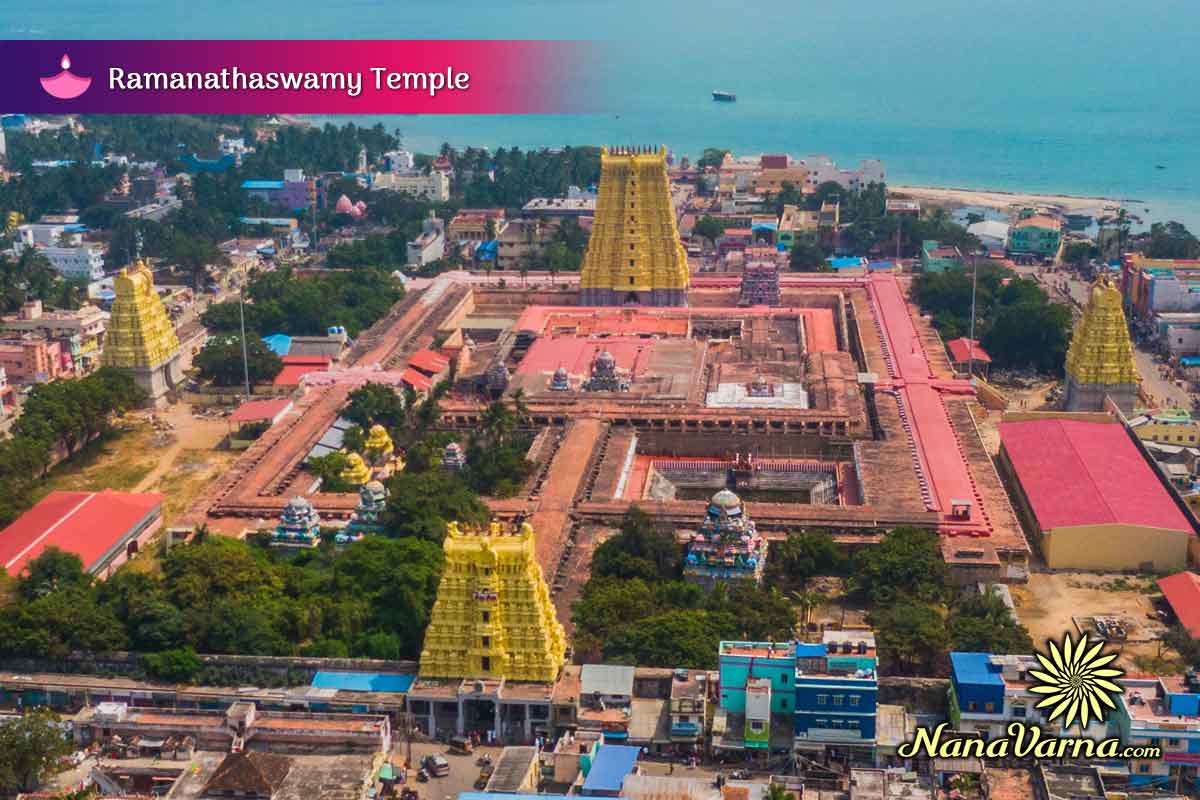
Dedicated to Lord Shiva, this temple of breathtaking architectural beauty having the world-famous third corridor constructed by King Muthuramalinga Setupati around 1763 is located at Rameswaram in Tamil Nadu.
The exact date of its construction of this ancient Indian Temple is not known but written records show that it was expanded in the 12th century A.D. by the rulers of Pandya Dynasty.
It is one of the 12 Jyotirlinga Temples and a Char Dham shrine. The guiding deity is Lord Shiva. Lord Rama worshipped this deity during his stay at Rameswaram. The centuries-old unique South Indian architectural tradition finds its best expression here.
The temple premises are fortified with a high compound wall on all its four sides measuring about 865 feet furlong from east to west and one furlong of 657 feet from north to south with huge towers to the east and the west and finished gate towers to the north and south.
This temple is known globally for having the longest outer set of corridors among all Hindu temples of the world. They measure 6.9m in height, 400 feet each in east and west and about 640 feet in the north and south.
The total length of all the corridors is 3650 feet, which is distinctive. The temple also has 1212 pillars in the outer corridor.
The Ramanathaswamy Temple has also the Vishwalingam which was brought here from Mount Kailash by Lord Hanuman. The shrine houses the only Lingam of a Hindu temple in the world to have been built with the stone of Mount Kailash.
6. Badrinath Temple – The Heaven On Earth Nestles Here
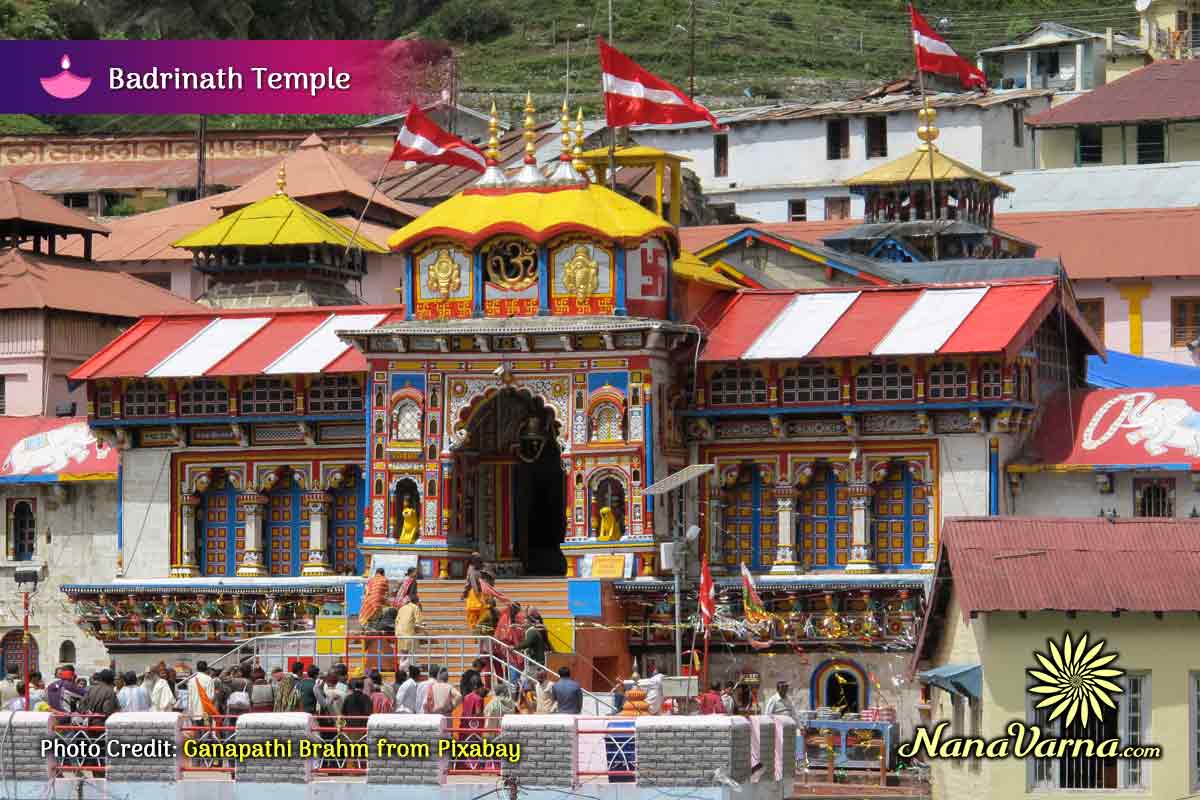
One of the Char Dhams, this temple is extremely ancient as it finds its references in Hindu scriptures Vishnu Purana and Skanda Purana. Divya Prabandha, a Tamil canon, composed by the saints of Azhwar from 6th to 9th centuries A.D., also talks about it.
Located at Badrinath in Garhwal Hill on the bank of Alakananda River in the Himalayan region in Uttarakhand, the current structure of the temple came up 1400 years ago.
Dedicated to Lord Vishnu, it is opened only for six months a year, from April to November. Adi Sankaracharya has visited this holy temple.
Architecturally, it is a replica of the Garhwali-style. The conical-shaped roof of the sanctum is about 49ft tall with a small cupola on the top, covered with a gold gilt roof.
The Hindus believe that the deity of Lord Vishnu – a one-foot black granite stone in the form of Badrinath is Swayam Vyakta Kshetra or a self- manifested one called the Shaligram Shila.
This temple figures in the Vedic scriptures that were composed between 1750 B.C. till 500 B.C.
According to the Hindu mythology, when Lord Vishnu meditated here in extreme cold, Goddess Lakshmi assumed the form of Badri trees to protect him from the severity. Badri trees are known as Jujube or Indian dates. This act of Goddess Lakshmi immensely pleased Vishnu and he named the place as Badrika Ashram.
Badri is very famous for the Kumbh Mela and Mata Murti Ka Mela.
Strangely, it may be located in the Himalayan region, but has a very famous hot spring with sulphur-rich water known as Tapt Kund. Many pilgrims consider the water as divine medicine for many diseases, particularly for skin ailments.
This is the only shrine where one can find the folk-lore of River Ganga coming to the earth. To mark this holy event, every year Mata Murti Ka Mela is held at Badrinath.
Legend-wise, the mother of Badrinath divided River Ganga into 12-channels and the place where it flowed became Badrinath. One should visit this place to attend the very famous Badri Kedar Festival which is held in the month of June every year.
7. Dwarka Temple – Where the Legends of Lord Krishna Linger
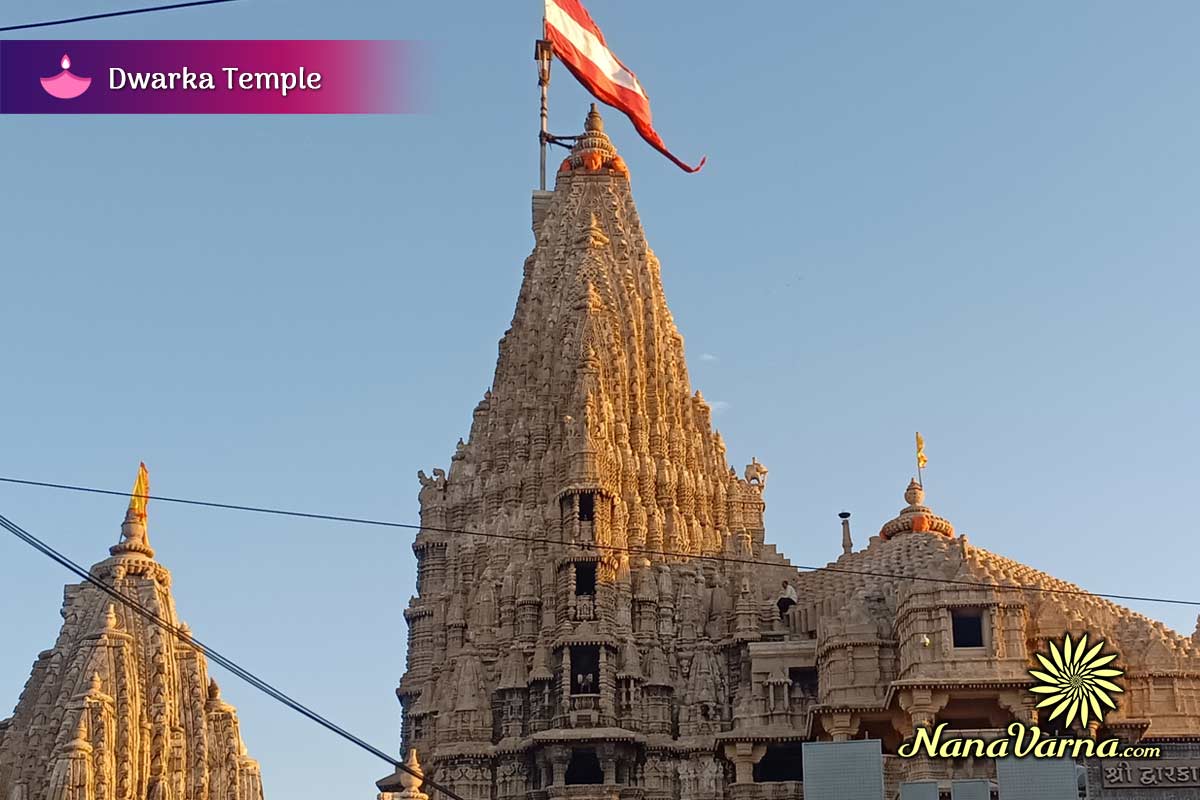
This Char Dham is located at Dwarka in Gujarat. Though destroyed by Islamic invation at different junctures of history, the latest archaeological excavations succeeded in finding pieces of evidence that this temple is about 2200 years old thus making it a historical structure.
Legendarily built by Vajranabha, the great-grandson of Lord Krishna, it was destroyed in 1472 A.D. by Sultan Mehmud Begada, but emerged later.
This is the finest example of the Chalukya School of architecture and sculpture. It covers an area of 27 metres by 21 metres with an east-west length of 29 metres and a north-south width of 23 metres. The temple has a 51.8m tall peak.
The main shrine of the five-storied building is supported by 72 pillars. Facing towards the West, the temple is located at an elevation of 12.19 metres (40.0 ft) above mean sea-level.
This temple is dedicated to Lord Krishna. Adi Sankaracharya paid a visit and has also stayed at this temple.
This is India’s only shrine built by Lord Krishna himself on reclaimed land from the sea and also the lone temple related to Sage Durvasha, known for cursing, when enraged.
Legend says once Durvasha came here to see the Dwarka Palace. Krishna went to welcome him with wife Rukmini. While walking towards the palace with Durvasha, Rukmini felt thirsty and urged Krishna to bring some water. Krishna dug a hole through which the water of River Ganga flowed and Rukmini quenched her thirst. But, it enraged Durvasha. He cursed Rukmini to remain there like a statue. This is the spot where the temple was built.
This is the only Hindu temple in the world which personifies that Lord Krishna will be there till sun and moon exist. It is indicated through the symbol of a flag bearing sun and moon on the top of the temple.
8. Kamrup Kamakhya Temple – The Place of the Supreme Mother Goddess
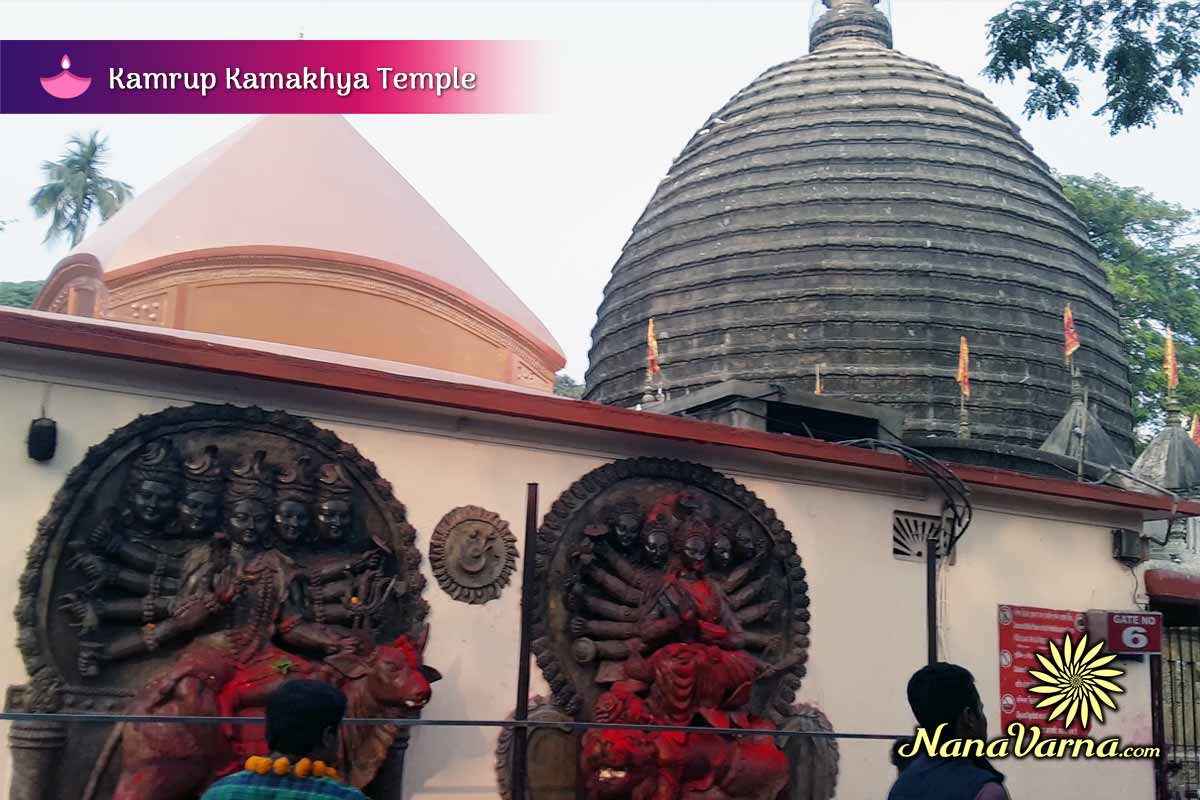
Dedicated to Mother Goddess Kamakhya, this ancient temple is located at Nilachal Hills near Guwahati in Assam.
One of the 51 Shakti Peeths and an ancient centre of Tantrism, it came up in the 8th century A.D. It is a hybrid structure referred as Nilachal Type or Kamrupa style in architectural science – a shrine having hemispherical dome on a cruciform base.
Kalika Puran, composed in the 10th century A.D., mentions Kamakhya Temple as a seat of Tantrism and mysticism. Though ruler Hussein Shah destroyed it in 1498 A.D., it was rebuilt in 1565 A.D. by the founder of Koch Dynasty, Vishwasingha.
This temple is particularly known for ancient Dados (an architectural style) showing sunken wall panels depicting sculptures of Lord Ganesha and other Hindu Gods and Goddesses.
The architectural genre of the Ahom Kings of Kamrup or Assam is very prominent here. The Ahom kings used to worship Kamakhya, the most important Tantrik Goddess and originally built this temple with a continued process of rebuilding for centuries together.
Known as the main centre of Tantrism and Buddhist tenet of Vajrayana.
This is the site where Sati and Lord Shiva had relished their leisure time. Those wanting to see the very epicentre of Tantrism and Shakti-worship should take part in the annual festival known as Ambubachi Mela or Manasha Puja.
9. Mumba Devi Temple – The Heavenly Seat of Town Deities of Mumbai

This temple of goddess Mumba Devi, the patron deity of Mumbai, was constructed in 1675 in Agri-Koli style of architecture. The Mumba Devi, a black stone idol, is one of the manifestations of Durga.
This temple, located at Bhuleshwar in South Mumbai, is built in old coastal-Konkani architectural style.
Mumba Devi, “Maha Amba,” or “Great Mother,” personifies the Mother Earth or Dharitri. Interestingly, Mumba Devi, a form of Parvati or Gauri, is depicted as a fisherwoman, which is a special depiction of the Goddess, only in this temple.
Mythologically, Lord Shiva asked Parvati to reincarnate as a fisherwoman and she obliged him. Even Lord Shiva had reincarnated himself as a fisherman to marry Mumba, the fisherwoman.
When in Mumbai, you must definitely visit this temple as this is the oldest Hindu temple of the port city. During Navaratri, thousands of people throng here. Witnessing the evening Aarti at this temple is supposed to be an extremely pious act.
10. Kalighat Kali Temple – Where the Toes of Goddess Sati’s Right Foot Fell
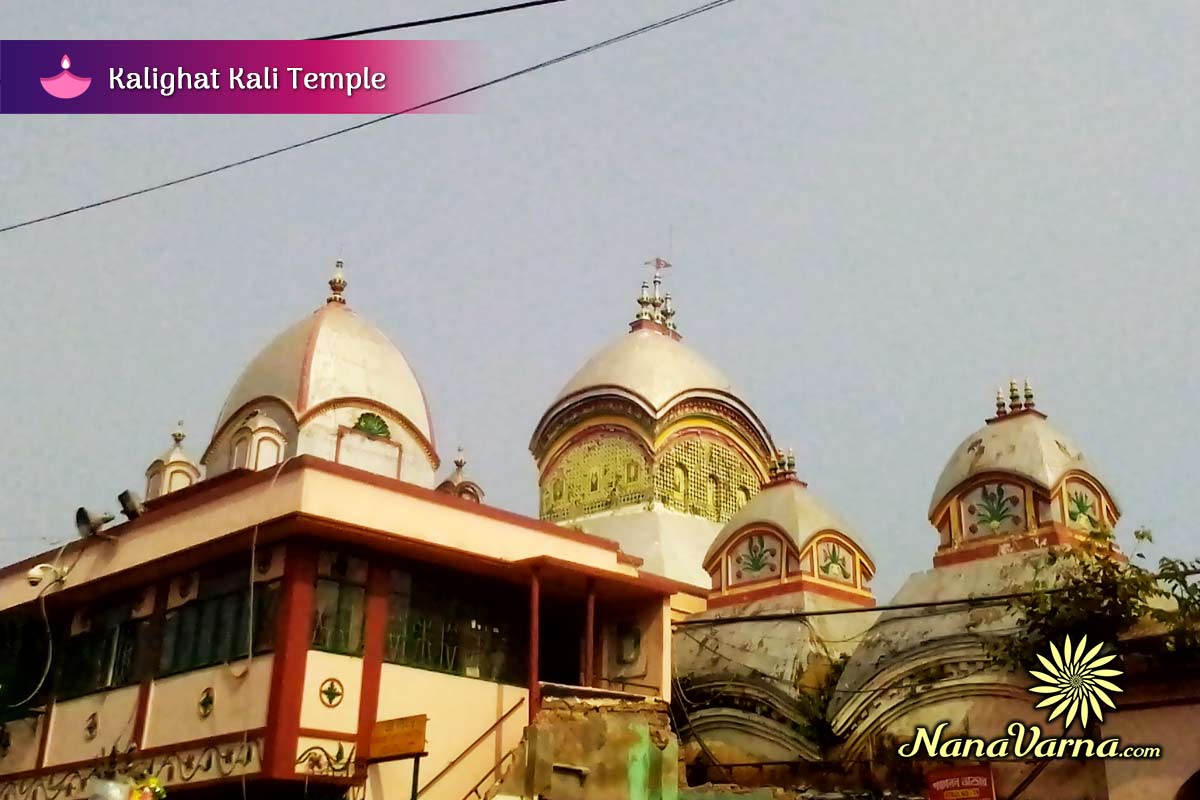
One of the 51 Shakti Peets, the present structure of this temple of Goddess Kali situated in Kalighat, Kolkata was created in 1809 with the touch of the traditional Bengal School of architecture. It, however, is believed to be 500 years old.
Archaeologically, the existence of Kalighat, one of the Ancient Temples in India, claims its belonging to the period of the Gupta Emperor Chandragupta II as coins of his period were traced here.
During the Rudra Tandava of Lord Shiva, Sati’s right foot toes fell at Kalighat.
The exclusivity of the temple is the statue of Goddess Kali that does not follow the traditional style of Bengal. The ancient black touchstone statue has three huge eyes, long protruding tongue and four hands made of gold.
Among the four hands, two holds the scimitar and a severed head of the demon Lord Sumbha and two other hands are in blessing Mudra or pose – Abhay and Varana.
A dip in the sacred tank of the Shakti Peeth, situated at the south-east end of the temple is believed to be religious as the right toe of Goddess Sati is traditionally held to have fallen here.
11. Hampi Temple – Where Glory of Vijaynagar Empire Lies

A UNESCO World Heritage Site located at Hosapete in Karnataka, the Hampi Temple Complex must be visited by everyone to have a glimpse of the superb architectural cum sculptural height attained by artisans, masons, ancient civil engineers and sculptors during the 14th century A.D. when the Vijayanagara Empire was at its peak.
Hampi was a thriving city in ancient times. It is evidenced by the records of Persian, Portuguese and other European travellers who visited it at different junctures of the glorious period of Vijaynagara rulers.
Located near the Tungabhadra River, this temple complex was demolished by the Islamic invaders in 1565 A.D. but rose again from its ruins, proving that the abode of Lord Virupaksha, mentioned in the Ramayana and Puranas, is indestructible.
Architecturally, the ruins of Hampi that spread over 2,100 hectares bears the strong Dravidian signature and some features of the ancient Deccan pattern.
Famous for its monolithic sculptures, Hampi captures a remarkable place in the Ramayana and the Puranas. Since the archaeological shreds of evidence say Hampi was a thriving city during the reign of Mauryan Emperor Asoka in 3rd century B.C., it dates back to 2300 years.
Hampi is a matter of pride for every Indian as this is the country’s only city that was compared with Rome by the Portuguese traveller Domingo Paes who visited it in 1520 A.D. Prior to that in 1420 A.D., the Italian businessman and traveller Niccolo de Conti had also credited it as a very beautiful temple city sprawling around 97 km with massive fortifications.
12. Sri Venkateswara Temple – Kaliyuga Vaikuntam – The Paradise of Kaliyuga
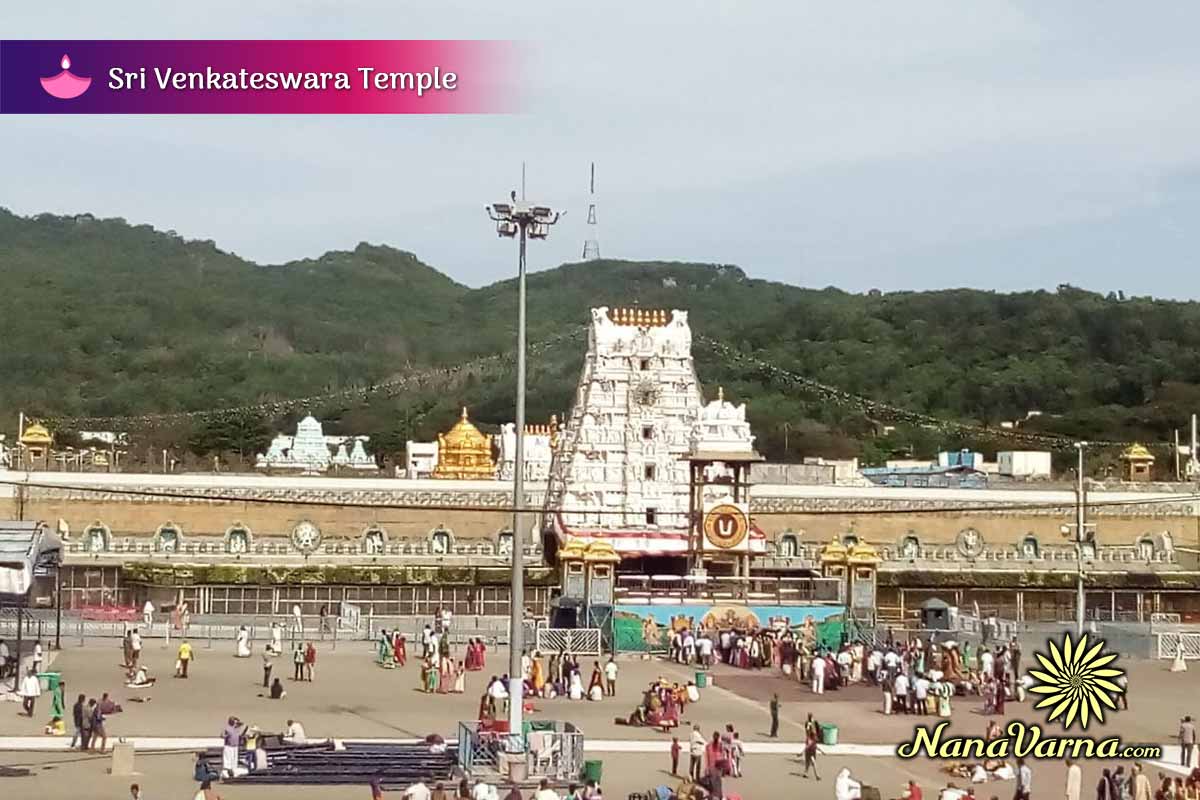
Positioned in the hill town of Tirumala at Tirupati in Andhra Pradesh, the Venkateswara Temple is considered to be one of the holiest of the holy shrines for Hindus in India.
Devoted to Lord Venkateswara, one of the exhibitions of Vishnu, the construction of this temple began in or around 300 A.D. in the Dravidian architectural style, with the construction art remaining unique for centuries together in the entire world.
Mythologically, Lord Venkateswara appeared in the world to save mankind from the evils and troubles of the Kali Yuga: the ultimate Yuga or era of the earth. That is why this shrine is believed to be the Vaikuntham or heaven of Kali Yuga.
The deity here is known as the Kaliyuga Prathyaksha Deivam. The Lord Venkateswara is also known by different names including Balaji, Govinda, and Srinivasa. The ancient shrine called “Temple of Seven Hills”, was patronized, built, rebuilt and extended by different Hindu dynasties including the Pallavas in the 9th century A.D., the Cholas in the 10th century A.D. and by the Vijaynagara emperors in the 14th century A.D.
Incidentally, the earthen lamp that always burns before the icon has never extinguished and we do not know the exact time the lamp started burning. Another very strange fact is that the back of the statue always remains moist. No other temple in India shows this phenomenon.
Arriving at this temple, you would learn a very interesting mythos that forms core faith of doing the Mundan or the tonsure ceremony done here. It is believed, the hair we see in the effigy is real and a myth is attached to it, perceiving that the Lord Balaji lost some locks of his hair and a Gandharva Princess Neela Devi cut her locks and offered him to plant them on his head, which was executed by God Govinda. Hence, people come here for holy Mundan.
13. Meenakshi Amman Temple – The Home of the ‘Fish Eyed’ Beauty
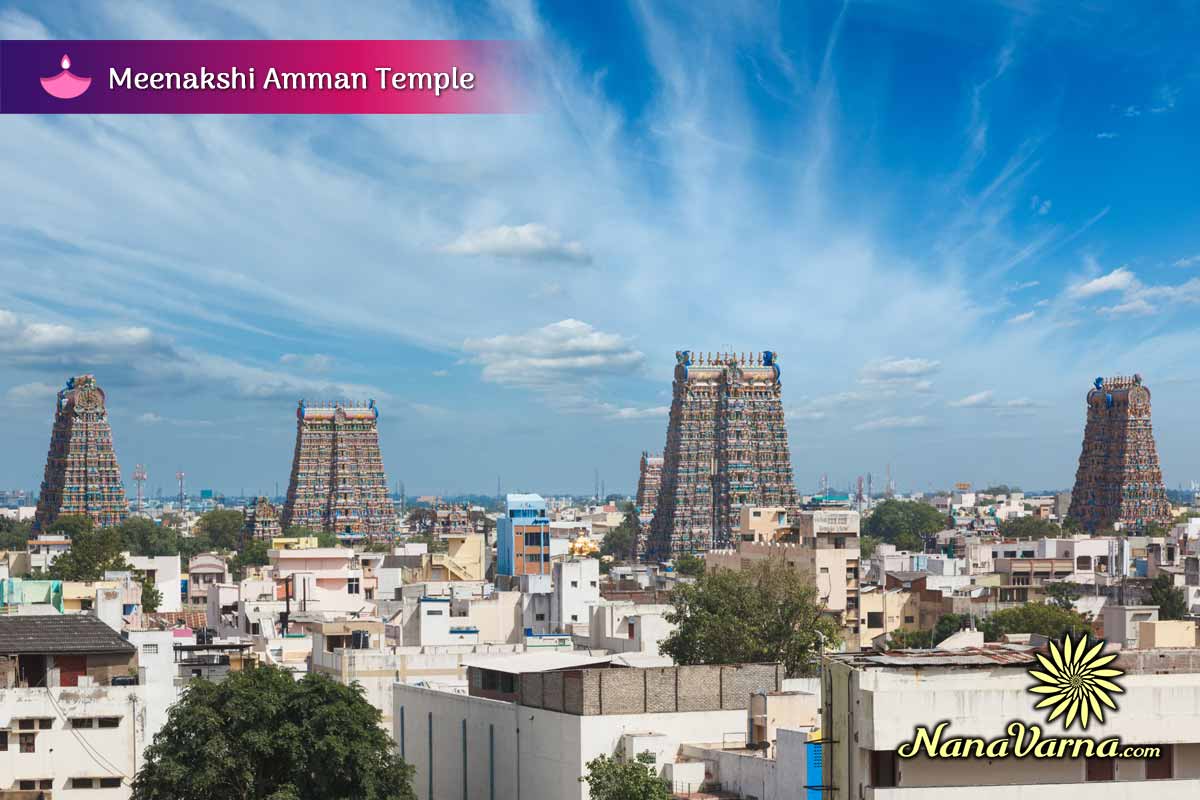
Known the world over for its exotic, lofty and extremely fine design, this temple located on the bank of Vaigai River at Madurai in Tamil Nadu is dedicated to Goddess Meenakshi (one of the forms of Goddess Parvathi) and her consort Sundareshwar (a manifestation of Lord Shiva).
Being one of the Ancient Temples in India, the Meenakshi Amman Temple finds its references in the 6th century A.D. Tamil Sangam literature. It was believed to have extended, decorated and attached various structures in the 12th century A.D. by King Kulasekara Pandya.
The temple was sacked, broken, vandalized, and gold, jewels and ornaments were plundered by Malik Kafur, a Muslim commander, in the early 14th century A.D. But the Meenakshi Amman Temple was rebuilt by the rulers of the Vijayanagara Empire. This is one of the reasons why there are a very distinct impression and features of the Vijayanagara style of architecture still visible in this temple. King Vishwanatha Nayakar, Nayak Dynasty, further extended the temple in the 16th century A.D.
The 14 Gateway Towers or Gopurams added to the temple bears mark of the restoration and extension of the temple. The architecture of the temple is particularly known for 1,000 pillar hall known as ‘Ayiramkaal.’ Another special feature is the exquisite murals of celestial beings. The scenes of the marriage of Lord Shiva with Goddess Meenakshi painted in ancient times are simply stupendous.
Those who aim to mix their pilgrimage with learning about legends would find it fulfilled here. Here, the tale of Meenakshi, an incarnation of Parvati, still lingers.
She was born to King Malayadwaja Pandya and Queen Kanchanamala after performing several Yagnas (sacrificial rites). Meenakshi, as a three-year-old girl, mythically came out of the fire during the final Yagna and married Lord Shiva.
14. Kashi Viswanath Temple – One of the 12 Jyotirlinga Sanctuaries of India
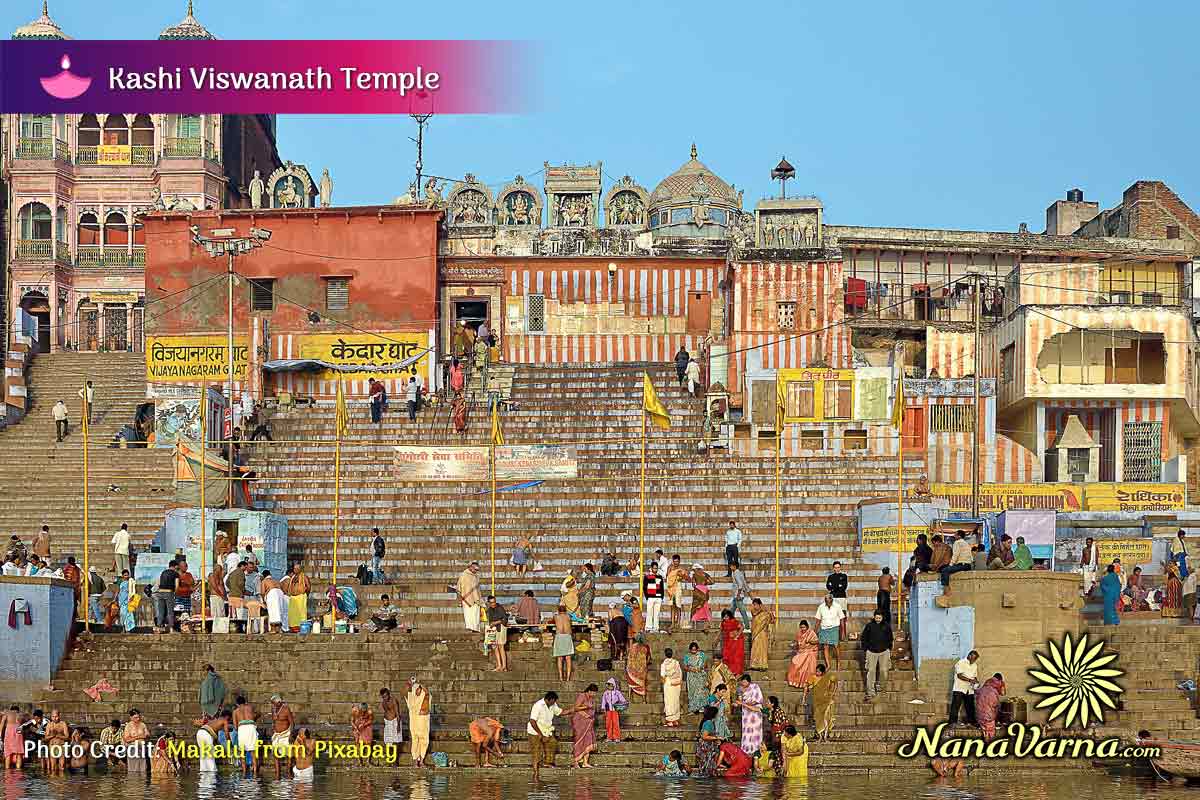
This temple, considered to be one of the ancient holy places in India, at Varanasi, Uttar Pradesh is committed to Lord Shiva is a Jyotirlinga temple – one of the 12 Jyotirlingas of India.
The principal deity here is Shri Vishwanath or Vishweshwara, literally meaning The Lord of the Universe. Over the last 800 years, this temple was attacked repeatedly by the Islamic invaders and Delhi Sultans. However, it sprang up again to its old glory.
The holy temple was toppled by the Mughal Emperor Aurangzeb but was back in form. The temple that we see today was built in 1780 by Ahilya Bai Holkar, a Maratha ruler.
Maharaja Ranjit Singh, the first independent Sikh Maharaja, donated a ton of pure gold to this temple in 1835, which was used to create the spire and dome of the temple.
Though the ancientness of the temple is not known factually, the Puranas render testimonials. There is a separate Khanda – The Kashi Khanda or a part in the Skanda Purana.
The temple has a small well known as Gyaan Vapi or the wisdom well, the only well of wisdom among the temples in India.
You must visit this temple to realize the folly of untruthfulness. The folk-tale of this temple proves it.
According to the Shiva Purana, once Brahma and Vishnu ran into arguments as to who is supreme. To test them, Shiva pierced the three worlds as a huge endless pillar of light or Jyotirlinga and asked them to identify the bottom of it. While Brahma flew as a swan to the top of the pillar and claimed he had found the end, while Vishnu confessed that he was unsuccessful, thus accepting the defeat. But Brahma’s false statement enraged Shiva who took the form of Bhairava and cut off Brahma’s fifth head and cursed that he would never be worshipped.
15. Brihadishvara Temple – The Seat of Lord Shiva
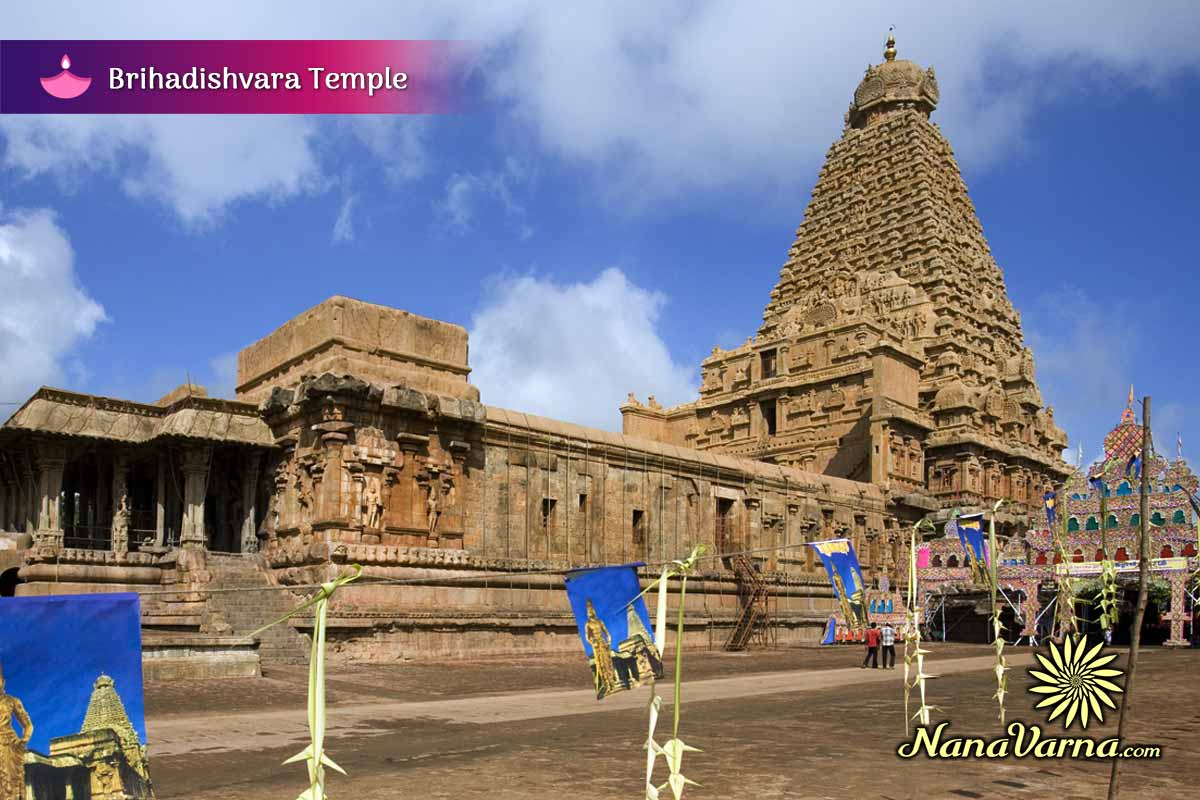
Also known as Rajarajesvaram or Peruvudaiyar Kovil, this temple is located on the bank of Kaveri River at Thanjavur in Tamil Nadu. Built by the Tamil King Raja Raja Chola-I, this temple is known as Dakshina Meru or pole (Meru) of the South.
King Raja Raja Chola-I built it from 1003 A.D. to 1010 A.D. This 216 feet tall temple bears the traditional architectural style of the Chola kings. Astoundingly, the weight of the capstone of this temple weighs 80 tons! What a breath-taking record….!!! It is a centre of the Shaivism, Vaishnavism and Shaktism traditions.
The Vimana Tower of the temple stands above the sanctum sanctorum and one of the tallest in South India. It is built with granite, owing to one of the tallest Shiva Lingas in India. The Brihadishvara Temple’s architectural style represents the pattern of the civil constructions that developed in Tamil Nadu from the 5th century A.D. to the 9th century A.D. Even in those ancient days, the axial and symmetrical geometric rules were applied to build it.
This is the finest surviving example of frescoes of the Chola Rule done themes of Shaivism with natural pigments which still radiates.
Here, you can see 64 inscriptions of Rajaraja Chola-I in Tamil and Grantha scripts. Some of these scripts mention names of those who donated for this temple.
Mother India, thus is graced with a garland of temples, each having amazing mythologies and history associated with them. India, truly, is the best exemplification of divinity!


